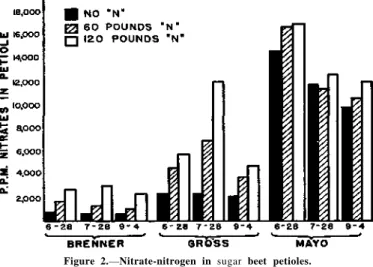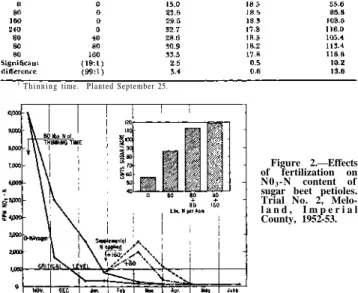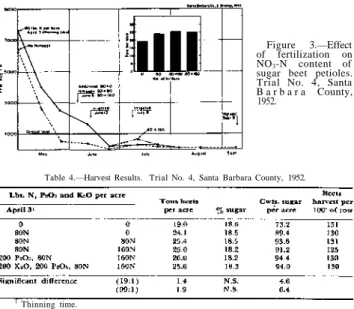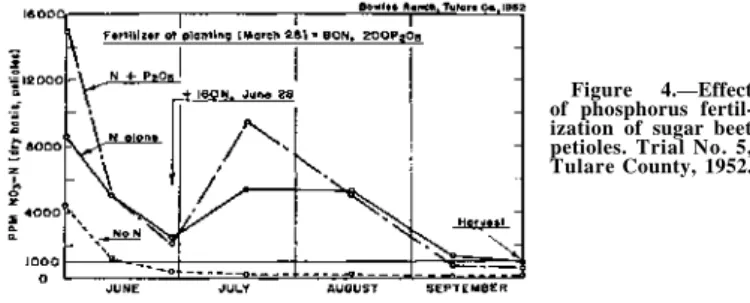Cooperative Research
E. CORMANY 1
Do not overlook what cooperation has done to establish the mechanization of sugar beet culture in America. I want to claim, on behalf of our Society, that the American Association of Sugar Beet Technologists has been largely responsible for this spirit of cooperation and progress.
Patterns of Cooperation In Sugar Beet Research
One of the main goals is to find selective chemicals that can economically control wild oats and leafhoppers in sugar beet crops. This work needs to be done if sugar beet growers are to take full advantage of the gains that have come in the recent past.
What's New in Sugar Research?
Suppose you take the percentage of calories in various national diets from fat and plot it on the horizontal axis. The men were fed fatty acid molecules with radioactive C14 atoms, and within hours some radioactivity was detected in the cholesterol in their blood.
AGRONOMY
Effect of Method of Application of Double Super- phosphate on the Yield and Phosphorus
The amount of phosphate was significantly different at the 1 percent level for yield, relative growth and percentage of phosphorus in the leaves. Methods of phosphate were significantly different at the 1 percent level for yield, relative growth and percent phosphorus in the leaves.
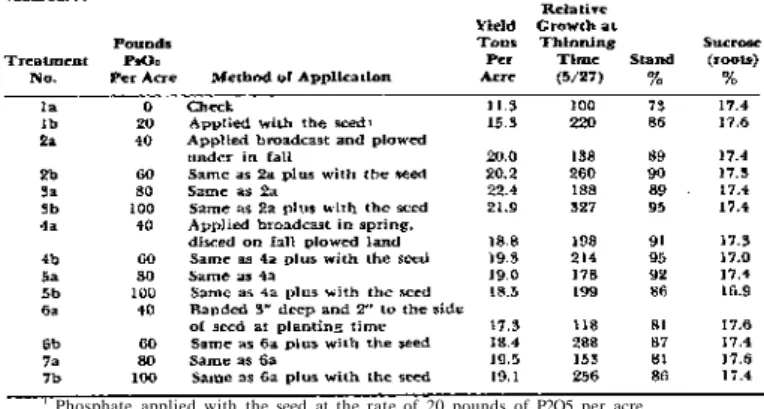
A Study of the Effect of Magnesium Sulfate on Yield and Sucrose Content of Sugar Beets
- Introduction
- Procedure
- Results
- Discussion
- Summary
A study into the effect of magnesium sulphate on the yield and sucrose content of sugar beets. An experiment is outlined and data presented on the use of magnesium sulfate on sugar beets.
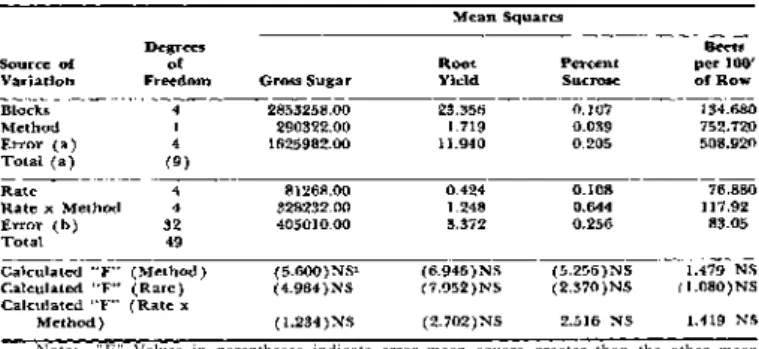
Response of Sugar Beets to Nitrogen Fertilizer in the Imperial Valley, California 1
PROCEEDINGS OF CONVERSATIONS-EIGHTH ASSEMBLY 39 Table 2.—Yield and quality of sugar beet and seasonal composition of the stalk as In-. Effect of fertilizer treatment on yield and sugar content of sugar beet in Garden City, Kansas1.
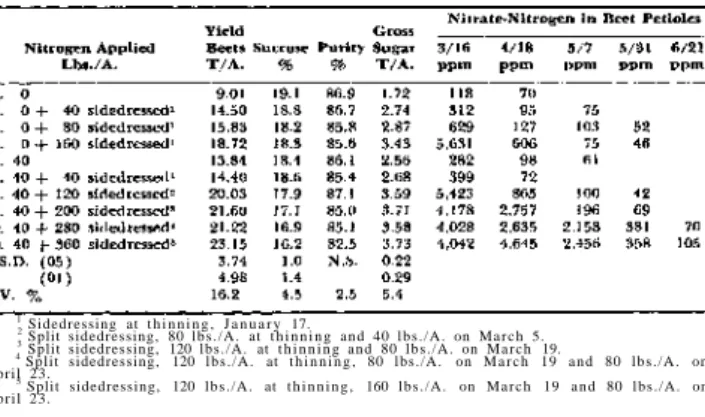
The Effect of Fertilizer Treatments Upon Yield and Sugar Content of Sugar Beets at Garden City, Kansas 1
The reduced sugar content resulted in a drop of 635 pounds of sugar per acre at the Roth location. Sugar content at the Mayo location was reduced in the presence of nitrogen fertilizers, but not significantly.
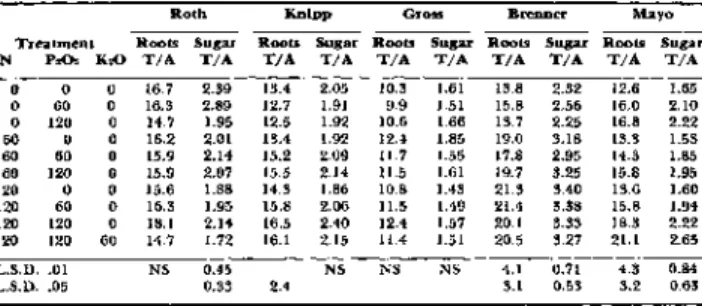
The Application of Petiole Analyses to Sugar Beet Fertilization
In the case of this field, the nitrogen level of the plants was below the critical concentration almost all season long when no fertilizer was applied. Even though supplemental nitrogen was applied on June 5 and the field irrigated on June 13, the NO3-N content of the leaves did not increase significantly.
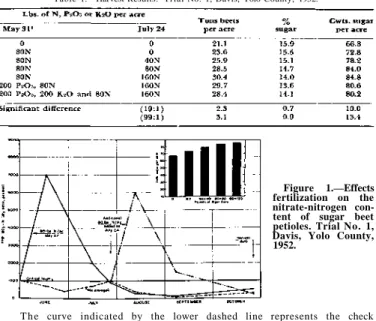
Anhydrous Ammonia, the Effect of Time, Rate and Technique of its Application in the Production
PROCEEDINGS OF CONVERSATIONS — EIGHTH GENERAL ASSEMBLY 59 the name suggests that the use of ammonia by its absorption is in irrigation. Nitrojection service is the application of ammonia by direct injection into the soil, with no added water required. The time and amount of ammonia input have a marked effect on the ratio between the mass of the top and the mass of the root of sugar beet.

Response of Yield-Type Versus Sugar-Type Sugar Beet Varieties to Soil Nitrogen Levels
Due to a nitrogen fertility gradient in the area selected for the experiment, this was an unfortunate choice of design. As a result of the difference in the initial nitrogen fertility of the two fields chosen for these trials and the applied nitrogen fertilization rates, it can be concluded that the two cultivars U. These two cultivars were compared with the same four nitrogen levels and also on three harvest dates (28 September, 6 November, 1 3 December).
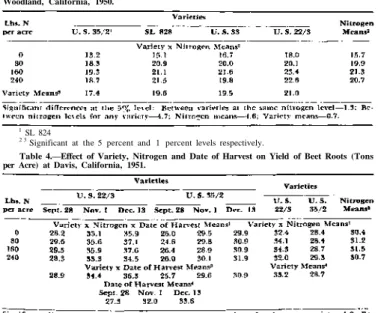
Cropping and Fertilization Practices for the Produc- tion of Sugar Beets in Western Nebraska 1
Alfalfa in the cropping system increased the use of phosphorus in sugar beets and other crops. PROCEEDINGS—EIGHTH GENERAL ASSEMBLY 75 gene and phosphorus percentages in tops and roots of sugar beet and. Maximum sugar yields per acre was obtained in the non-legume rotation that received fertilizer (Table 4).
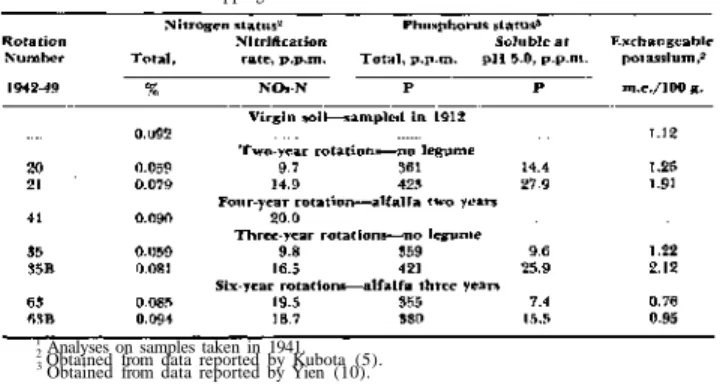
The Fertility Balance in a Ten-Year Sugar Beet Rotation After Forty-two Years of Cropping
DUBETZ 1
Although high crop yields were achieved, the original fertility of the soil was probably reduced. The results of soil analyzes show that a slightly higher amount of phosphorus was made available in 1951 than in 1911. Although there is a definite annual deficit in potassium, it does not appear to be of immediate concern in view of the large amount of present on earth.
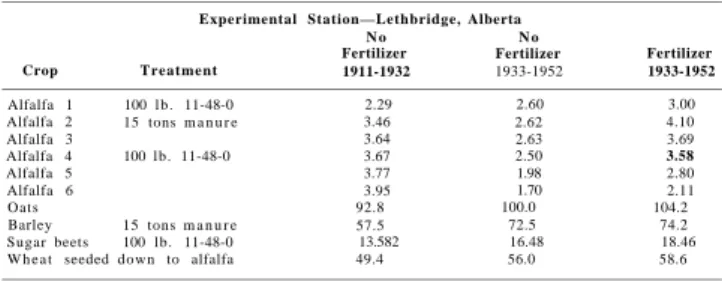
Effects of Rotation on Sugar Beets in the Red River Valley
In the short period of two years, resulting differences between the different green manure crops and black summer fallow were not reflected in the beet yield. Only time will tell if plowing down heavy legume green manure crops will increase the fertility level to the point where it will increase the yield over black summer fallow. In addition to maintaining yield and cost data on all plots, records were kept of the amount and analysis of various green manure crops plowed.
Preliminary Comparison of the Effects of Leguminous and Non-Leguminous Green Manures on
Sugar Beet Production
PROCEEDINGS—EIGHTH GENERAL MEETING 91 The length of the egg shoots was about 30 inches and was in the vegetative stage with a nitrogen content of 3.9 percent (Table 1). The barley averaged 38 inches in height and was in the early milk stage with a nitrogen content of 1.2 percent. However, kidney beans contributed almost twice as much soil nitrogen to the top growth as barley.
Stand and Yield of Sugar Beets, and Weed Populations as Affected by: Broadcast Fertilization,
Mechanical Thinning, Application of Herbicides and Their Interactions 1
Thinning Treatments
- Early plant c o m p e t i t i o n
Those plots that received post-emergence spraying were omitted from the above calculations due to the adverse effect of the spraying. While the preemergence (preemergence only) treated beets were greater for any given spacing, the subsequent application of a postemergence treatment (preemergence plus postemergence) counteracted the benefit of the preemergence treatment. T he lower yield of the post-emergence spray plots was apparently the result of an adverse effect on weight as shown by the weight-space ratio and also of a slight reduction in beet number.
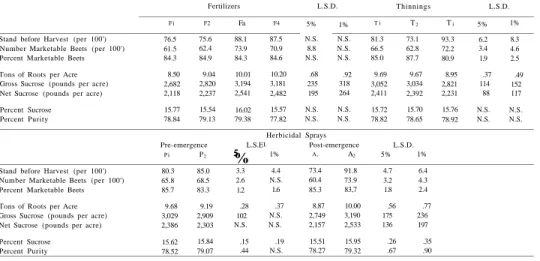
Irrigation and Fertility Studies on Sugar Beets at Logan, Utah
PROCEEDINGS—EIGHTH GENERAL MEETING 113 of the row to match irrigation practices over the balance of the field. Subsequent disturbance of the root zone was found to render many of the moisture tension data unreliable. At the end of the season, the blocks were excavated and all readings before irrigations were adjusted to the calibration shown.
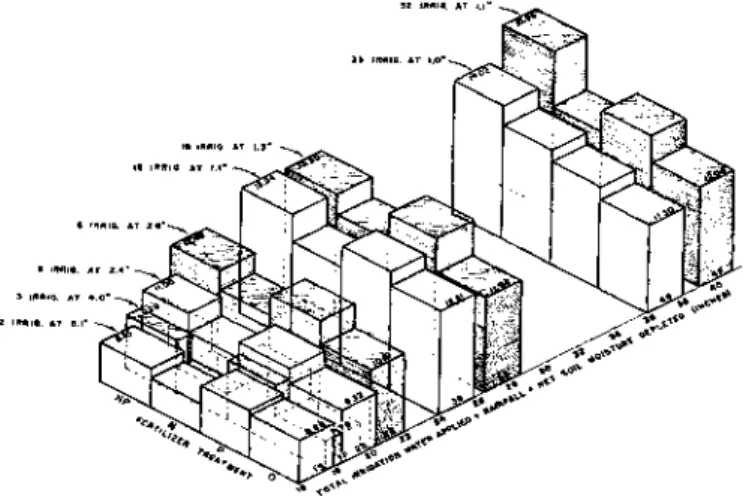
Progress Report on Irrigation Experiment—
Rader Farm, Saginaw, Michigan
No visual difference could be observed in the standing grain with the possible exception of an increased incidence of rust in the irrigated area. Sugar beet has the ability to draw moisture from the subsoil when moisture is not available in the surface area. At no time during the growing season and 1953 did the soil moisture become low enough to cause excessive wilting of the beet leaves, as often occurs in the irrigated areas of the West.
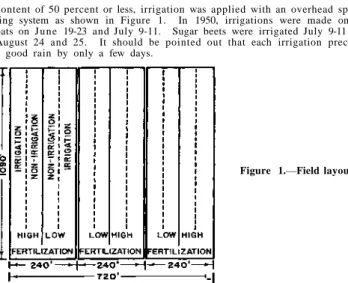
The Control of Annual Grasses in Sugar Beets With Dalapon
The dosage required for control of water grass under conditions favorable to the action of dalapons is in the range of 3 to 5 pounds of sodium salt per acre, as shown in Table 1. Although the work reported here on sugar beet is concerned with water grass (Echinochloa crusgalli) only, research in other projects shows that a wide range of annual grasses, both winter and summer, can be controlled with the doses of dalapon specified above. Much more research is needed before dalapon can be recommended to control grasses in sugar beet.
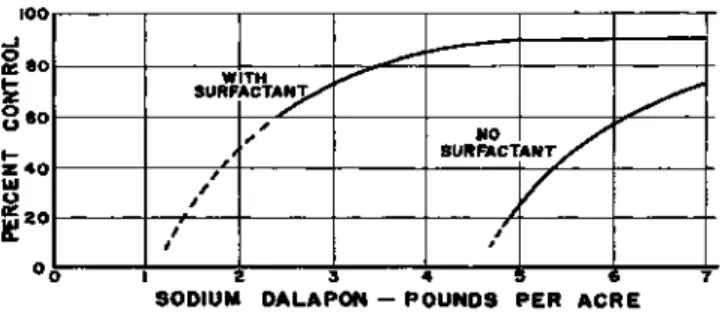
Grass Control in Sugar Beet with the Herbicides IPC, TCA and DCU
Damage to sugar beets from IPC applications at a rate of £3 per hectare was negligible. PROCESSING – EIGHTH GENERAL MEETING 133 Table 1. Status, yield and percentage of sugar of sugar beets grown on DCU and TCA. Limited commercial use of TCA during the period 1950 through 1953 in areas served by the Great Western Sugar Company has shown that 5 pounds per acre of TCA, the acid equivalent, is about the highest rate one could advocate use on sugar beets at this level. area.
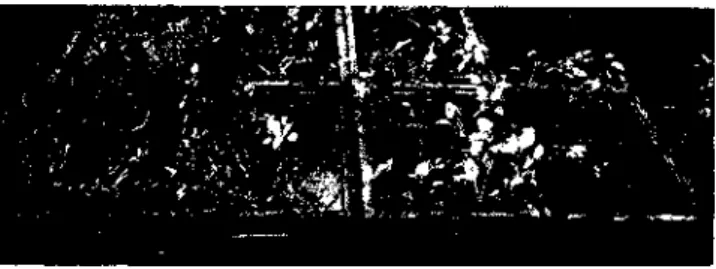
Results with IPC Spraying in Eastern Montana
G. ECKROTH 1
The Use of Chemical Additives to Control Soil Crusting and Increase Emergence of
Sugar Beet Seedlings 1
The application took place by broadcasting the additives on the soil surface and incorporating them at different depths in three of the experiments. Additives were also applied as diluted water solutions, 0.3 percent, sprayed on the soil surface in two of the trials. The effect of the additive on the soil was visible in all the trials.

Influence of Krilium Soil Conditioner on Sugar Content of Beets
This was believed to be due to the darkened color of the soil and better soil aeration caused by better aggregation of soil particles on treated plots. Seedling growth was faster on Krilium-treated plots before thinning, but after thinning, growth became more uniform. Although the soil was quite wet at harvest due to a late irrigation and rain just before harvest, soil on treated plots was friable compared to the compact bale effect of soil on control plots.
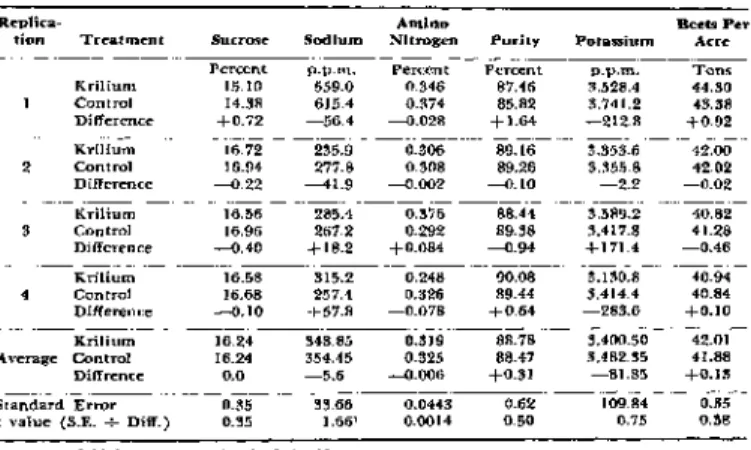
Problems Connected with High Beet Populations
This is a comparison of beets received at the same factory dump from growers in the same area of the factory, and in both cases the beets were about 98 percent mechanically harvested. 34;It is well known that when one sugar beet becomes infected with the southern root rot fungus, the disease quickly spreads to other plants remaining in the same block. More important, however, is the fact that double or multiple beets are about three times more prone to infection than single beets in the same field.
Estimate of Space Occupied Proposed as a Measure of Sugar Beet Stands
From these data, percentage of space occupied and hills per 100 row yeet were calculated as estimates of thinned stands. The test was diluted by four workers working a row in pairs in pairs or separately in different parts of the experiment. Converting the posture estimates to occupied space materially reduced the variability in this test.
Cultural Practices Related to Yields and Germination of Sugar Beet Seed 1
Fertilizer Experiment
Some very significant additional yield was obtained with double nitrogen, but there was no evidence of any benefit from phosphate. Together, nitrogen and phosphorus produced a highly significant effect on seed quality as measured by germination, and there was some indication of improvement with nitrogen alone, but it was not significant in this experiment. Foliar spraying did not improve the germination of the harvested seed.
Top Clipping Experiment
Field trials were designed to test the effect of nitrogen, phosphorus and potassium on seed yield and germination of harvested seed. One hundred and fifty pounds per acre of nitrogen doubled the seed yield. Spring foliar spray treatments had no significant effect on either seed yield or quality as measured by germination.

Comparison of Hand and Machine Thinning of Sugar Beets 1
In one case (A), thinning was done only with bending heads, in the other (B) with 8-bladed knives after preliminary treatment with bending heads. T h i n n i n g of the beets of one-third of the plots was accomplished with a combination of bent heads and knives. Between May 14th and 21st, plots were culled twice with 16-blade bending heads, once with 8-blade knives (H/j inch blades), and once with 12-blade bending heads.
Sugar Beet Planting Date Studies in Imperial Valley, California
An important consideration is that harvesting of these light-bolting varieties may be completed in early spring before normal sugar beet blanking occurs. Sucrose percentages were determined, however, and they were approximately equal to the sucrose percentages of beets harvested on May 7, 1952. The middle four rows in each of the four replicates of each planting date were harvested for yield and sucrose data.
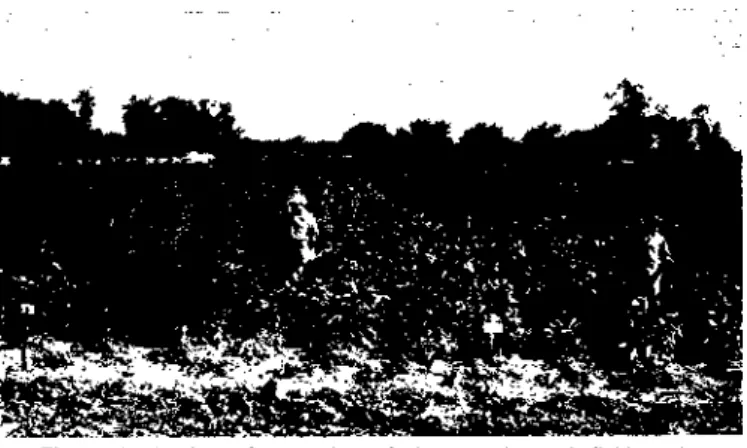
Experiences with Sugarbeet on Land Flooded by the Sea
Investigation showed that the plants had more or less "adapted" to the high concentration of salt in the soil solution. It was concluded that calcium deficiency was relative and not direct and was finally spoken of as a sodium toxicity, indicating that the balance between calcium and sodium in the plant was disturbed. Many fields in the flooded areas showed a much higher percentage of virus yellows than fields on the neighboring "dry" land.
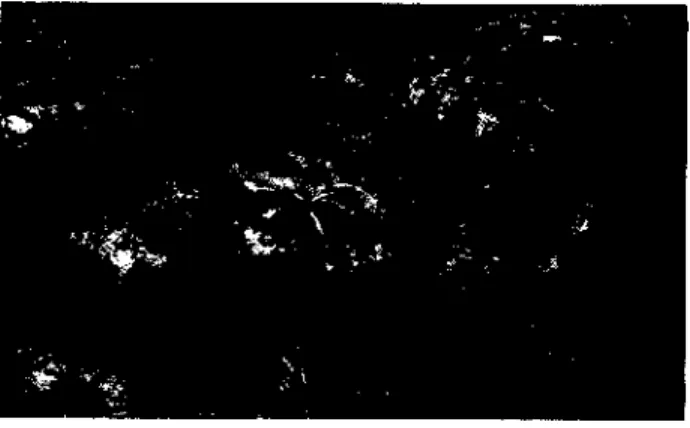
Sugar Losses Caused by Frost Defoliation
The data presented in Table 2 compare sugar losses between two and twelve days of regrowth after treatment. This means that sugar losses were seen very soon after the peak was destroyed and continued at the same rate per day for the period being tested. Cold storage of all treatments for ten days after commercial dressings. crown removal) resulted in an increase in sugar content of 0.66 percent in treatments harvested two days after treatment and 0.32 percent in beets harvested twelve days after treatment.
The Influence of Maleic Hydrazide on Bolting and Yield of Overwintered Sugar Beets in California
In Imperial Valley, three concentrations of maleic hydrazide spray were applied on three dates before harvest. However, sucrose percentage was not significantly increased by maleic hydrazide in the final harvest. In general, the yield of sugar per acre not significantly affected by maleic hydrazide spray.
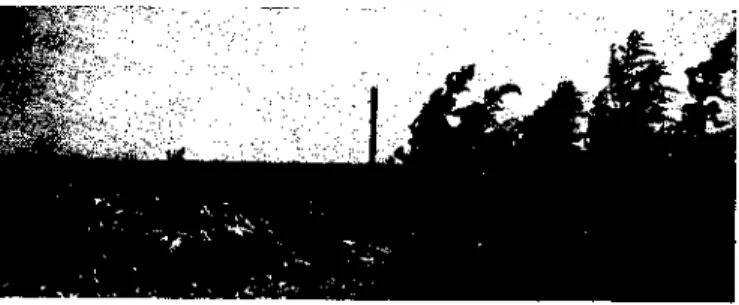
ENTOMOLOGY AND
PLANT PATHOLOGY
Outbreaks of Beet Leafhoppers North and East of the Permanent Breeding Areas 1
Until 1953, the beet warbler had only been reported twice east of the Mississippi River. The dean of the Idaho Agricultural Experiment Station noticed curliness on tomatoes in Lafayette, Indiana. Breeding areas and economic distribution of the beet warbler in New Mexico, southern Colorado, and western Texas.
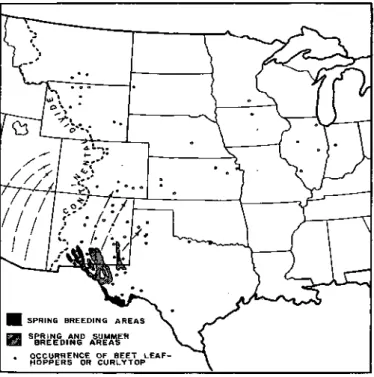
Curly Top Moves East
D, E and F are greenhouse plants infected by curly top virus obtained from sugar beets collected in Kansas and Colorado. C shows symptoms on
